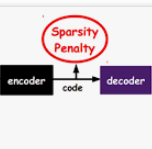项目名称: 基于稀疏表示的单幅图像联合盲复原及识别
项目编号: No.61472274
项目类型: 面上项目
立项/批准年度: 2015
项目学科: 计算机科学学科
项目作者: 何宇清
作者单位: 天津大学
项目金额: 83万元
中文摘要: 目前的图像复原算法多是面向人类视觉感知而设计,无法保证复原后的图像得到很好的识别;另一方面,现有的视觉识别系统大多数假设输入为高质量图像,而现实应用中如监控视频等所感兴趣的目标往往是各种模糊降质后的低质量图像,使得识别任务面临很大挑战。少量为识别而设计的算法或基于多幅图像、或在模糊降质模型参数已知等条件下进行。本项目突破传统'先复原再识别'、仅考虑视觉而未从识别角度优化图像复原质量等局限,提出基于稀疏表示的单幅图像联合盲复原及识别研究方案。首先研究单独图像盲复原、图像识别方法;然后探索图像复原和识别之间的相互影响和促进机理;最后以同时改善图像复原质量并提高图像识别性能为目标构建基于稀疏表示的联合盲复原及识别数学模型,并设计合理的稀疏先验作为模型的约束项,反演模型并求解,同时获取模糊降质函数、清晰图像以及高精度识别结果等目标。项目算法可广泛用于视频监控、人脸识别系统、智能手机处理系统等领域。
中文关键词: 图像盲复原;图像识别;稀疏表示;先验约束
英文摘要: Most existing image restoration algorithms are designed for human visual perception, which usually could not achieve good performance on the target recognition. On the other hand, a majority of existing visual recognition systems assume that the input images should be of high quality. However, under most circumstances, for example, video surveillance, the target of interest in the captured image usually suffers from low qualities such as low resolution due to the camera shaking, motion blur due to the relative motion between the target and the camera, which makes the task of recognition more challenging. There are only a few image restoration algorithms designed for target recognition, but they are based on more than one images, or suppose the parameters of the degradation model is known. Breaking through the limitation of the existing algorithms which follow the traditional rule-recognition after restoration or improve the restored image quality depending on visual perception but not the recognized ones, we propose a sparse-representation-based joint restoration and recognition scheme based on the single image. So the separated blind deconvolution and target recognition are researched at first and then the correlation between the image restoration and recognition are explored to further promote each other. Finally, with the purpose of improving the performance of the restoration and the recognition, we construct a sparse-representation-based joint optimized mathematic model which could unify the restoration and recognition task, and then the reasonable sparse prior constrains are incorporated, and the model is inverted to get the optimal resolution. So the blurry degradation model, restored image and high-accuracy recognition result could be obtained at the same time. The algorithms proposed in this project will be widely used in the area of video surveillance, face recognition and smart phone processing, etc.
英文关键词: image blind restoration;image recognition;sparse representation;priori constraints

